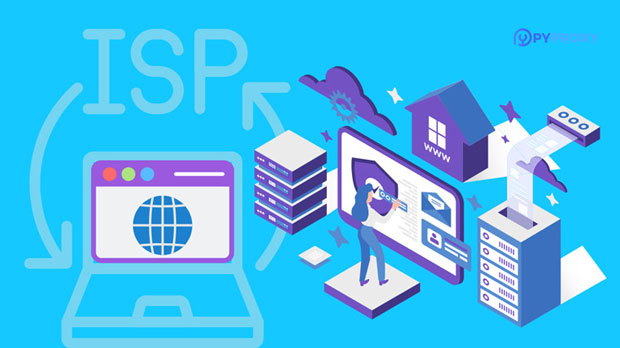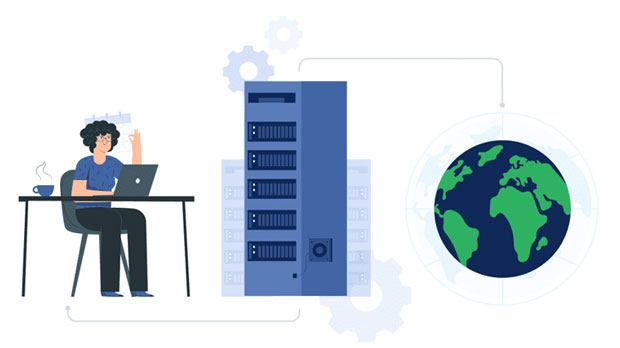When it comes to SEO data collection, having the right proxy provider can make a significant difference in the efficiency and accuracy of your efforts. Among the top contenders are PYPROXY and iproyal, both offering distinct advantages for web scraping, data extraction, and SEO analytics. The decision of which one is better for SEO data collection largely depends on your specific needs, such as speed, reliability, geographic coverage, and pricing. In this article, we will deeply analyze both options, weighing their features, pros, and cons to help you make an informed choice. Let’s dive into a comparison of pyproxy vs. iproyal for SEO data collection and explore which service aligns better with your business goals. Overview of SEO Data Collection and Proxy ServicesSEO data collection often involves scraping search engine results pages (SERPs), gathering competitor data, monitoring website rankings, and analyzing other online factors that influence SEO performance. Web scraping and data collection tools rely heavily on proxies to ensure that they can access these online resources without facing IP blocks or captchas. The primary role of a proxy is to mask the original IP address of the scraper, making it appear as though requests are coming from different users or locations.Two major players in this market are pyproxy and iproyal. Both provide residential and datacenter proxies, which are ideal for SEO and web scraping tasks. However, their services have subtle differences that may make one more suitable than the other, depending on the specific needs of SEO professionals. pyproxy: Features and Benefits1. Global Coverage and IP PoolOne of the standout features of pyproxy is its large and diverse global IP pool. The service boasts a network of residential IP addresses located in various countries, making it an excellent option for collecting geo-specific SEO data. If your SEO efforts require scraping localized search results or monitoring regional SERPs, pyproxy’s geographically distributed proxies can provide a high level of accuracy and reliability. Their residential IPs are sourced from real devices, ensuring better anonymity compared to datacenter proxies.2. Speed and Stabilitypyproxy offers relatively stable speeds for SEO tasks, but it does not guarantee the same level of consistency as datacenter proxies. However, for most SEO scraping purposes, the speed is usually sufficient, especially when combined with the vast number of IPs available. pyproxy's proxies are generally stable for long sessions, making them suitable for tasks like website ranking checks and competitor analysis.3. Pricing and Cost-Effectivenesspyproxy offers competitive pricing, with options designed to cater to different business scales. While their residential proxies are priced higher than datacenter proxies, the cost is justified by the higher level of anonymity and geo-specificity they provide. They also offer pay-as-you-go plans, which can be ideal for smaller businesses or occasional scraping tasks.4. Customer Supportpyproxy is known for its responsive customer support. If you face issues with IP blocks, speed, or any other aspect of the service, their support team is available to provide assistance. This makes it a viable option for businesses that value reliable customer service when it comes to SEO data collection. iproyal: Features and Benefits1. Scalability and Flexibilityiproyal offers flexibility in terms of scalability, with the ability to handle large volumes of requests. For businesses that need to scale up their SEO scraping tasks, iproyal offers solutions that can adapt to increased demands. This makes iproyal an attractive choice for large-scale SEO agencies or enterprises looking to scrape massive amounts of SEO data.2. Affordable PricingOne of the key advantages of iproyal is its competitive pricing structure. While iproyal does offer residential IPs, their main focus is on providing cost-effective datacenter proxies. These proxies are ideal for users who don’t require high levels of geographical targeting or anonymity. For bulk data collection tasks where cost is a priority, iproyal offers substantial savings compared to residential proxy networks like pyproxy.3. Proxy Rotation and IP Pool Sizeiproyal provides a rotating proxy system that allows you to automatically switch IPs during web scraping tasks. This rotation helps to prevent IP blocks and captchas, making it a valuable feature for SEO data collection. However, the quality of proxies may not always match up to the residential IPs offered by pyproxy. While iproyal’s IP pool is large, it mainly focuses on datacenter proxies, which are more prone to blocks and are less geographically distributed than residential proxies.4. Ease of UseFor SEO professionals and beginners alike, iproyal provides a straightforward user interface. The setup process is intuitive, and you can quickly integrate it with your SEO tools. However, the lack of specialized customer support, compared to pyproxy, may pose challenges for businesses that need more assistance in troubleshooting. Comparison: pyproxy vs. iproyal for SEO Data Collection1. IP Quality and GeographyWhen it comes to SEO data collection, the quality and diversity of the IP pool play a crucial role. pyproxy’s focus on residential proxies gives it a significant edge in terms of geographic accuracy and anonymity. If you need to gather SEO data from specific countries or regions, pyproxy provides a broader and more diverse selection of IPs, which is crucial for localized SEO scraping.On the other hand, iproyal’s primary strength lies in its datacenter proxies, which offer scalability and cost efficiency. However, the lack of geographical diversity in iproyal’s IP pool could limit its usefulness for highly localized SEO tasks. If global coverage is a top priority, pyproxy would likely be the better choice.2. Speed and PerformanceIn terms of performance, pyproxy’s residential proxies are more reliable but generally slower than iproyal’s datacenter proxies. For tasks like large-scale scraping, where speed is critical, iproyal may offer an advantage. However, for tasks that require a high level of accuracy, consistency, and long-duration sessions, pyproxy’s proxies will likely provide more stable results.3. PricingFor small to medium-sized businesses or occasional SEO scraping tasks, iproyal’s datacenter proxies offer excellent value. With competitive pricing and bulk scraping options, iproyal is a solid choice for cost-sensitive users. However, if anonymity and geo-targeting are more important than price, pyproxy’s residential proxies justify the higher cost for long-term projects.4. Customer Supportpyproxy’s customer support is more robust, offering proactive assistance and troubleshooting, especially for users who face IP-related issues. If your SEO data collection tasks are mission-critical, this level of support could make a significant difference. iproyal, on the other hand, lacks the same level of customer support, making it more suitable for users who are experienced in handling scraping issues independently. Conclusion: Which is Better for SEO Data Collection?Both pyproxy and iproyal offer distinct advantages for SEO data collection. If your priority is anonymity, geographical accuracy, and high-quality proxies, especially for localized SEO tasks, pyproxy is the clear winner. Its extensive global IP pool, stability, and excellent customer support make it the best option for businesses that rely heavily on SEO data for strategic decision-making.However, if your focus is on cost-efficiency and the ability to scale scraping tasks, especially in bulk, iproyal could be a more practical choice. Its affordable pricing and scalability make it a strong contender for businesses with less concern for geographic targeting or advanced anonymity.Ultimately, the choice between pyproxy and iproyal depends on your specific SEO needs. Carefully evaluate your data collection goals, budget, and the level of support required to determine which service will be the best fit for your business.
Oct 24, 2025



































































